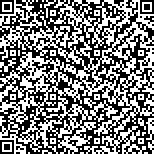本文已被:浏览 366次 下载 310次
Received:June 27, 2023 Published Online:April 20, 2024
Received:June 27, 2023 Published Online:April 20, 2024
中文摘要: 目的 观察耳甲部电针对晚发型抑郁症的疗效,并运用静息态功能磁共振成像(fMRI)技术分析其可能的神经机制。
方法 选择广州医科大学附属脑科医院于2021年1月至2023年1月治疗的晚发型抑郁症患者64例,运用随机数字表法分为观察组32例与对照组32例。两组均常规服用抗抑郁药,观察组采用耳甲部电针治疗;对照组患者将治疗仪耳夹夹持在耳甲处,但不进行电流刺激。两组患者每次治疗30 min,每日2次,每周治疗5 d,连续治疗8周。比较两组疗效和治疗前后17项汉密尔顿抑郁量表(HDRS-17)、患者健康问卷躯体症状量表(PHQ-15)、重复性成套神经心理状态测验量表(RBANS)、匹兹堡睡眠质量指数量表(PSQI)的评分。治疗8周后行MRI扫描,采集静息态fMRI数据,计算差异脑区治疗前后各向异性(FA)值的变化并进行组间比较。
结果 观察组总有效率较对照组有所提高(90.63% vs 71.88%),但差异无统计学意义(χ2=3.692, P=0.055)。治疗后,两组患者HDRS-17评分和PHQ评分低于治疗前(P<0.05),RBANS量表延迟记忆、注意、言语、视觉广度和即刻记忆评分高于治疗前(P<0.05),PSQI量表评分低于治疗前(P<0.05),双侧额叶、丘脑、海马和杏仁核FA值均高于治疗前(P<0.05),且以上各指标的改善观察组均优于对照组(P<0.05)。
结论 对晚发型抑郁症,在常规抗抑郁药治疗基础上联合耳甲部电针,有望提高治疗的疗效,其机制可能与其调节患者神经机制有关。
Abstract:Objective To explore the neuromechanisms of auricular concha electroacupuncture (ACEA) treatment in enhancing the treatment of late-onset depression using resting-state functional magnetic resonance imaging (fMRI).
Methods A total of 64 patients with late-onset depression admitted to the Affiliated Brain Hospital of Guangzhou Medical University from January 2021 to January 2023 were randomly divided into observation group (n=32) and control group (n=32) using a random number table method. Both groups were routinely treated with antidepressants, and the observation group received ACEA treatment,while the control group received a therapeutic device ear clips clamped on the auricle, but no electrical stimulation was performed. Both groups received treatment for 30 minutes each time, twice a day, five days a week, for 8 consecutive weeks. The therapeutic effects of both groups were compared. The scores of the following scales were compared between the two groups before and after treatment, including Hamilton Depression Rating Scale (HDRS-17), Patient Health Questionnaire-15 (PHQ-15), Repeatable Battery for the Assessment of Neuropsychological Status (RBANS) scale, and Pittsburgh Sleep Quality Index (PSQI) scale. After 8 weeks of treatment, MRI scans were performed to collect resting fMRI data. The changes in fractional anisotropy (FA) values of different brain regions before and after treatment were calculated and compared between two groups.
Results The overall effective rate of the observation group was slightly higher than that of the control group (90.63% vs 71.88%), but the difference was not statistically significant (χ2=3.692, P=0.055). After treatment, the HDRS-17, PHQ and PSQI scores of both groups were lower than those before treatment (P<0.05), the RBANS delayed memory, attention, speech, visual breadth, and immediate memory scores of both groups were higher than those before treatment (P<0.05), and the FA values of bilateral frontal lobes, thalamus, hippocampus, and amygdala were higher than those before treatment (P<0.05). The improvements of above indicators in the observation group were better compared to the control group (P<0.05).
Conclusion For late-onset depression, the combination of ACEA on the basis of conventional antidepressant treatment is expected to improve the efficacy of treatment,and its mechanism may be related to its regulation of patients neurological mechanisms.
keywords: Resting functional magnetic resonance imaging Auricular concha electroacupuncture Late-onset depression Cognitive function Sleep quality Neuromechanisms
文章编号: 中图分类号:R277.7 R245.32 文献标志码:B
基金项目:广东省中医药局科研项目(20222180)
引用文本:
